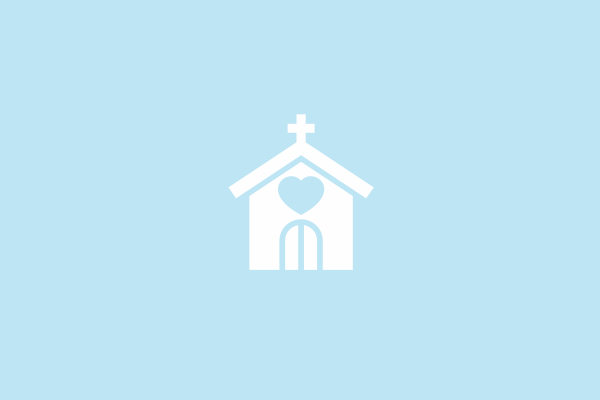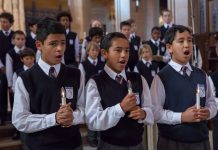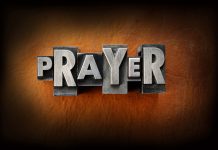
by Kate Ristow
For an interactive and informative tour of St. Peter’s Basilica and Square and a Vatican City Quiz, see “Exploring St. Peter’s Basilica and Square” at the end of this article.
Although the home of the worldwide Catholic Church is the Vatican, the only thing that most of our students know about this ancient yet very modern city is that it is where the pope lives. As we prepare to celebrate the rebirth of Christ in our hearts, let’s explore this sacred city that is dedicated to serving and governing the Church our Lord founded nearly 2000 years ago.
The Vatican and the Holy See
Although we often use the terms Vatican and Holy See interchangeably, they are not the same. The term “see” comes from a Latin word that means seat. Originally, it referred to a bishop’s chair in his diocesan cathedral. Over time, it has come to signify the bishop’s religious and moral authority over the Catholics of his diocese. “Holy See” refers to the authority of the Bishop of Rome, one of the titles we use to describe the reigning pope.
However, the pope leads the universal Catholic Church; he speaks and acts for the whole Church. The Holy Father is assisted in governing the Church by the Roman Curia, the departments, ministries, and people who are responsible, with the pope, for the organization and mission of the Church.
The Vatican is a place. It is an independent state in Italy and the residence of the pope. The name “Vatican” comes from a Latin phrase that means hill of prophecy. It is believed that in ancient times, fortunetellers gathered on this hill to sell their predictions for the future to pagan passersby.
The site is also believed to be the location of Roman Emperor Nero’s “circus,” where hundreds of Christ’s followers were slaughtered. These early Christian martyrs were fed to wild animals or set on fire, all for the amusement of pagans. Tradition tells us that St. Peter, the Apostle chosen by Jesus to be the leader of his Church, was crucified in 64 A.D. in Nero’s circus and buried nearby. Saint Peter was the first Bishop of Rome.
From Pagan to Papal
In 312, the Roman Emperor Constantine converted to Christianity and the following year he issued the Edict of Milan, which declared that Christians and people of all faiths had the freedom to practice the faith of their choice. Constantine became a patron of the Catholic faith and helped the Church to grow—not only by his example but also by donating land and building magnificent churches for Christian worship.
In 324, Emperor Constantine had a basilica built over St. Peter’s tomb. Through the centuries, the place we now call the Vatican—the great churches, gardens, museums, libraries, the pope’s residence, and the famous St. Peter’s Square—were built up around the original basilica.
Vatican Facts
* Vatican City is the smallest country in the world. Its total area is only about 110 acres. It also has the smallest population of any state—approximately 950 people.
* The Vatican is completely surrounded by the city of Rome. So it is a state set within a city of almost three million citizens..
* The Vatican has its own radio station and broadcasts in 20 languages.
* The Vatican went “green” over three years ago. Because stewardship of the earth is an important responsibility given to us by God, the Vatican offsets its carbon footprint with the climate forest that the Church planted and maintains in Hungary.
* The Vatican museums are so vast that if you walked through all the galleries and spent only one minute studying each work of art, it is said that it would take you a total of four years to see all the ancient treasures on display.
The Swiss Guard
For over 500 years, the members of the Swiss Guard have had the responsibility of protecting the pope and providing security in the Vatican. They are the smallest military force in the world; the “pope’s army” is comprised only of approximately 110 soldiers and officers.
The dress uniforms of the Swiss Guard were originally designed by Michelangelo in the sixteenth century. Visitors sometimes mistake them for tour guides or colorful “photo ops,” but they are well-trained guards, ready to respond to any emergency. In fact, an undercover Swiss guardsman helped to shield Pope John Paul II from an attempted assassination in St. Peter’s Square in 1981.
To become a member of the Swiss Guard, a man must be Catholic, a Swiss citizen, male, and between the ages of 19 and 30. All recruits are required to complete basic military training in the Swiss army and have a high school diploma. They must also present certificates attesting to their good character. When new recruits are sworn in, they vow to “faithfully, honestly, and honorably” serve the pope and, if necessary, to sacrifice their lives for the Holy Father.
The Flag of Vatican City
The yellow and white flag [CLICK HERE] was adopted in 1929, when Pope Pius XI signed the Lateran Treaty with Italy. In ancient times, Italy and parts of France were known as the Papal States. The rulers of these territories tried to control the Church. The struggle and disputes between the Church and the various governments, led by kings or emperors, went on for centuries. Finally, under the Lateran Treaty, the Vatican was granted independence.
The crossed keys on the flag represent the keys given to the Apostle Peter by Jesus (Matthew 16:19). The gold key represents spiritual power; the silver key represents worldly power. The three-tiered tiara or crown represents the unity of the Communion of Saints or the three states of the Church: the faithful living on earth, those being purified after death in purgatory, and those enjoying everlasting happiness with God and all the angels and saints in heaven. Traditionally, these three states are called the Church militant, the Church suffering, and the Church triumphant.
Saint Peter’s Basilica and Square
The original basilica deteriorated over time and was torn down. Construction of the present basilica was begun in 1506, with many famous architects making important contributions to the shape and design of the church. Saint Peter’s Square, the large piazza or city square in front of the basilica, was added in the mid-1600s. Pilgrims from all over the world gather in the square for celebrations led by the pope, the canonization of new saints, and other special events.
People have other opportunities to see the pope around the Vatican. On most Wednesdays, the pope gives a public audience in the square if weather permits. If not, it is conducted in Paul VI Audience Hall. In 2010, most of Pope Benedict XVI’s public audiences focused on the lives of particular saints. Every Sunday, thousands of people receive the pope’s blessing from the window of the Papal Apartment in the Apostolic Palace.
Sistine Chapel
The Sistine Chapel is the most famous chapel in the Apostolic, or Vatican, Palace. It is a mistake to think that the Vatican Palace is just a fancy place built for the pope’s comfort. The Vatican Palace is a working building. It includes the Vatican apartments, where the pope and other important Church officials live, some of the offices of the Roman Curia or Church government, the five Vatican museums, the Vatican library, and five other chapels.
The Sistine Chapel is the place where the College of Cardinals—Church leaders who have been specially chosen to advise the pope—gather to elect a new Holy Father after the reigning pope dies. The results of each ballot are made known to the world by the burning of the ballots. If a candidate does not achieve a two-thirds majority, the ballots are burned with an additive that makes the smoke black. The smoke rises from the special chimney built into the roof of the chapel. When the required majority is reached, the ballots are burned with an additive that produces white smoke. The pilgrims waiting in St. Peter’s Square cheer and soon the new pope chooses his papal name and appears on the balcony of St. Peter’s to give a blessing: Urbi et orbi (to the city and the world).
Magnificent art is found everywhere in the Sistine Chapel. The most famous are Michelangelo’s paintings, called frescoes, on the ceiling and altar wall. The ceiling paintings show scenes from the Book of Genesis, the first book of the Bible. The altar wall is a vivid portrayal of the Last Judgment.
A Living and Lasting Legacy
Michelangelo’s paintings in the Sistine Chapel were completed in 1541 and many of the buildings and art in the Vatican are even older. Because our Church leaders understand that the Vatican is a treasure of history and faith, renovation projects are always underway. They are overseen with great care by experts in their fields. For example, the cleaning and restoration of Michelangelo’s paintings took ten years and was completed in 1994.
The Vatican belongs to believers. Although few of us will be able to visit our spiritual home on earth, modern technology has made it possible for us take virtual tours and to see important Vatican events in real time. At the historic Second Vatican Council, which began in 1962, Pope John XXIII challenged the Church to be part of the modern world. Today, the Vatican is ever ancient and ever new, a city that reaches out to all people, inviting us to discover the treasure of Christ and his Church.
Research Projects and Activities for Junior High Students
* Invite students to research and report on the lives and contributions of Vatican architects and artists such as Raphael, Bernini, Botticelli, and Michelangelo.
* Ask students to write a paper explaining the significance of May 6, 1527, for the Swiss Guard, and why new recruits are sworn in on the anniversary of that date.
* After learning about the Vatican flag, encourage the budding artists in your class to create a parish flag design on poster board. Afterwards, allow time for them to explain the significance of the symbols they include on their flags.
Kate Ristow, Contributing Editor to CATECHIST, is National Catechetical Consultant for RCL Benziger. She has been involved in children’s religious education for over 25 years as a Catholic-school teacher and parish catechist.
Exploring St. Peter’s Basilica and Square
Write the following website address on the chalkboard and direct students to copy it in their notebooks or on paper: saintpetersbasilica.org. Tell students to click on “Square and Area” in the left-hand navigation bar. Here they can explore St. Peter’s Square and area.
To have students complete a Vatican City Quiz [CLICK HERE], they will need to refer to “The Square—Piazza San Pietro” and other numbered sections below the diagram. In some cases, they will need to click on the circle to find the correct answer. Here are the answers to the quiz:
Vatican City Quiz Answers
1. A human form—with the basilica (church) as the head and the colonnades are the open arms of a human figure. This is a sign that the Catholic Church is open to all people.
2. The left is called “Charlemagne”; the right is called “Constantine.”
3. 140
4. “I can do all things in him who strengthens me” (Philippians 4:13).
5. The obelisk is from Egypt and was brought to Rome in 37 B.C.
6. Pope John Paul II was shot here in 1981.
7. New popes are announced and give their first blessings from this balcony.
8. The Bronze Doors lead to the Apostolic Palace.
9. People can check their backpacks, use the restrooms, and rent audio tours of the basilica.
10. The Angelus is prayed by the pope on Sundays at noon with the crowd in St. Peter’s Square.
Copyright 2010, Bayard, Inc. All rights reserved. This article is protected by United States copyright and other intellectual property laws and may not be reproduced, rewritten, distributed, redisseminated, transmitted, displayed, published or broadcast, directly or indirectly, in any medium without the prior written permission of Bayard, Inc.




